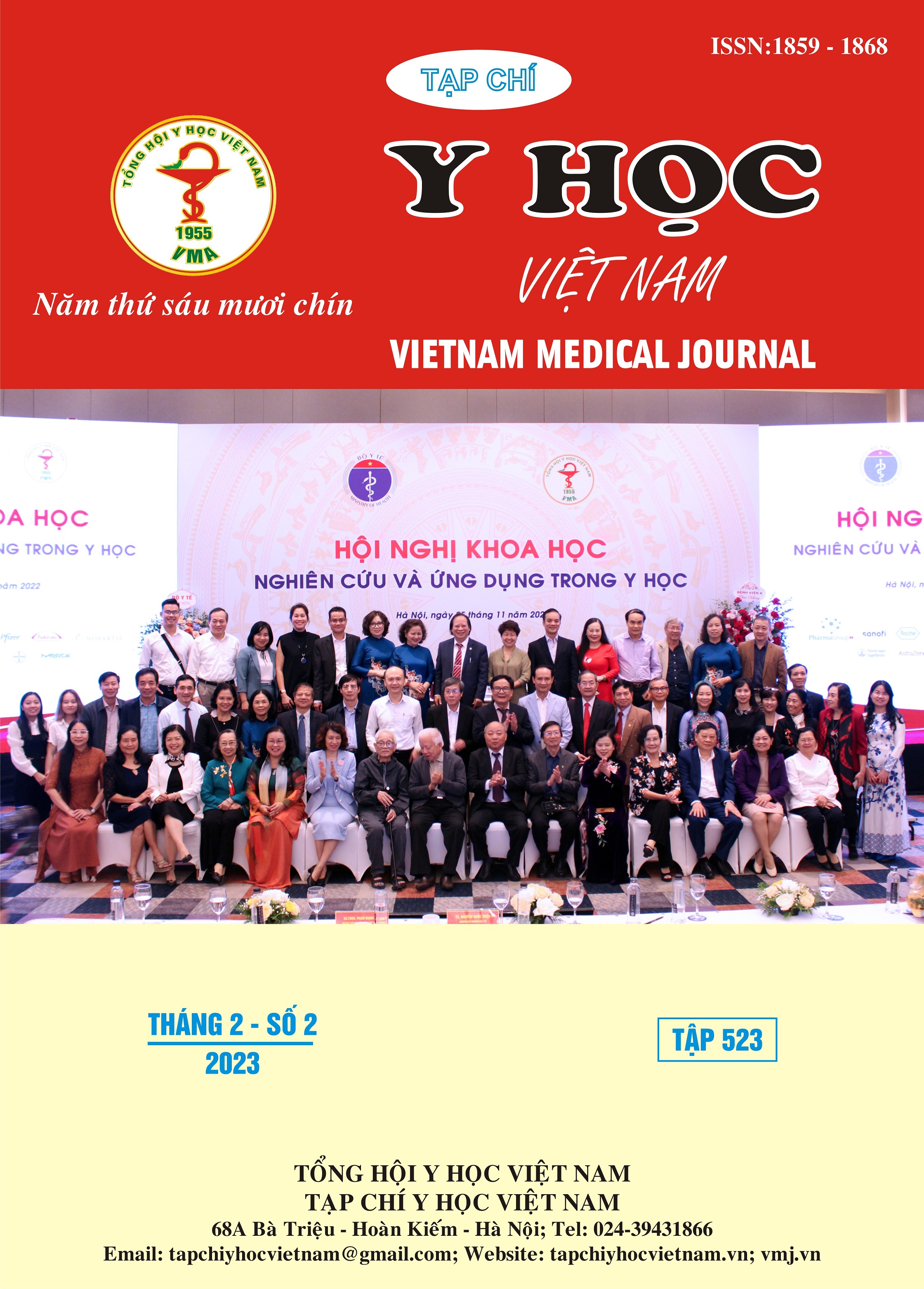APPLICATION OF INTRAOSSEOUS ACCESS DURING CARDIOPULMONARY RESUSCITATION FOR ADULT CARDIAC ARREST
Main Article Content
Abstract
Objectives: To evaluate the results of application of intra-tibia infusion technique in emergency circulatory arrest in adults. Subjects: 42 patients with circulatory arrest at the emergency department of Bach Mai hospital from August 2018 to September 2019. Methods: Descriptive observation. Quantitative variables are presented as mean and standard deviation; using parametric tests for normally distributed variables and non-parametric tests for non-normally distributed variables; The difference was statistically significant with p < 0.05. Qualitative variables are presented as percentage (%), the difference is statistically significant with p < 0.05. Results: The mean time of intraosseous infusion was 14.0 ± 3.9 seconds, independent of body mass index (BMI). The procedure is carried out easily with 100% of patients requiring only 1 effort. The average needle depth was 18.3 ± 4.2 mm, with a difference in needle depth between the high and low BMI groups. The average rate of infusion through the intraosseous line is 31.2 ± 9.2 ml/min under gravity and can be as high as 106 ± 22.3 ml/min using pressure dressings. Medicines and fluids used during cardiopulmonary resuscitation can be administered through the intramuscular route. Conclusions: The technique of intraosseous infusion which placing an infusion in the tibia is easily performed with a short implementation time and has few complications. This technique should be widely applied in the emergency process, especially out-of-hospital emergency.
Article Details
Keywords
Cardiac arrest, Intraosseous infusion
References
2. Ong M. E., Chan Y. H., Oh J. J. và cộng sự (2009). An observational, prospective study comparing tibial and humeral intraosseous access using the EZ-IO. Am J Emerg Med, 27 (1), 8-15.
3. Sunde G. A., Heradstveit B. E., Vikenes B. H. và cộng sự (2010). Emergency intraosseous access in a helicopter emergency medical service: a retrospective study. Scand J Trauma Resusc Emerg Med, 18, 52.
4. Paxton JH, Knuth TE, Klausner HA (2009). “Proximal humerus intraosseous infusion: a preferred emergency venous access”. J Trauma 2009 Sep;67(3):606-11
5. Torres F, Galán MD, Alonso Mdel M, Suárez R, Camacho C, Almagro V (2013). “Intraosseous access EZ-IO in a prehospital emergency service”. J Emerg Nurs; 39:511-4
6. Leidel B. A., Kirchhoff C., Bogner V. và cộng sự (2012). Comparison of intraosseous versus central venous vascular access in adults under resuscitation in the emergency department with inaccessible peripheral veins. Resuscitation, 83 (1), 40-45.
7. Reades R, Studnek JR, Garrett JS, Vandeventer S, Blackwell T. (2011) “Comparison of first-attempt success between tibial and humeral intraosseous insertions during out-of-hospital cardiac arrest”. Prehosp Emerg Care; 15:278–81
8. Frascone RJ, Jensen JP, Kaye K, Salzman JG (2007): “Consecutive field trials using two different intraosseous devices.” Prehosp Emerg Care; 11:164–71


